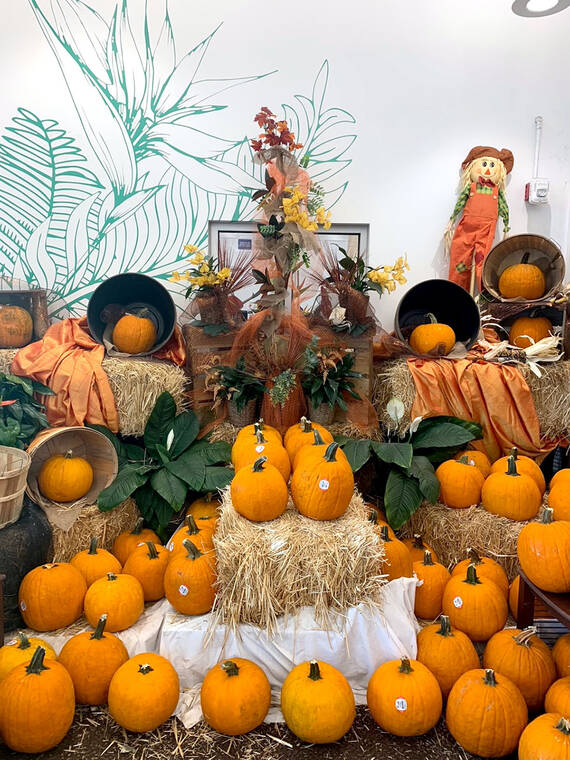Tropical Gardening: Cool, wet weather ideal for many diseases

Photo courtesy of Voltaire Moise Local stores have typical pumpkins available for carving but you can also use them for pies, soup and many other recipes after Halloween. Japanese Kabocha squash may also be used as well when pumpkins are not available.
Halloween brings to mind all kinds of creepy crawlies and you may find some in your home and garden as the weather cools.
Halloween brings to mind all kinds of creepy crawlies and you may find some in your home and garden as the weather cools.
These are the diseases that attack your favorite garden vegetables and ornamentals. The best disease prevention measure you can take with ornamental plants is to start with healthy or disease-resistant plants. According to University of Hawaii plant pathologists, once an ornamental plant becomes badly diseased, it is difficult to nurse it back to health. For this reason, every effort should be made to prevent introduction of disease causing organisms on plant material or in soil.
ADVERTISING
Many common plant diseases are caused by fungus organisms. Plants in poor growth are usually more susceptible to these diseases. Good cultural and sanitation practices will help prevent trouble such as removing diseased parts like leaves or branches as soon as they appear. Treat pruning wounds with a specially prepared material to stop entrance of wood decaying organisms and wood feeding insects. For treatment of fungus diseased plants, fungicide applications should begin when disease development first appears and should continue as recommended by the manufacturer.
Other fungus organisms that cause disease on plants, people, and even buildings are not diseases but are bothersome. Two types that are found throughout the tropical world including Hawaii are house mildew and green algae. Mildew flourishes in damp places. Hawaii’s high humidity often creates conditions favorable to the growth of this unsightly pest. University of Hawaii home economists suggest where mildew is already established on walls, remove as much as possible by scrubbing the discolored surfaces with a strong detergent in warm water. The remaining mold spores should then be killed with a treatment of household bleach, applied at the rate of 1 pint per gallon of water. Of course, you should be sure the bleach you select will not seriously fade the paint. If the infected surfaces need repainting, then the use of a mildew resistant paint is recommended or a standard paint to which a mildew retardant has been added. They also point out that paints that provide a hard surface will discourage the lodging of mold spores. For more advice concerning the control of mildew on painted surfaces, check with your local paint dealer.
Algae commonly grows on the surface of soil that is moist for periods of time. This is very common during the rainy season. These minute green plants often develop in such profusion that it forms a rather thick, greenish to blackish mat. Growth of such magnitude in a turf planting is detrimental to the grass because algae actively competes with the grass for both space and nutrients. In addition, if the algae mat dries, it forms a crust that retards or prevents the movement of water into the soil. If this occurs, the grass is subjected to a moisture stress directly due to the presence of the algae.
The same conditions that favor the growth of algae also favor the growth of fungi that bring on turfgrass diseases. In fact, a close association has been noted between frequent disease outbreaks and the presence of algae. Therefore it’s desirable to control both of these pests with one practice. Reducing the moisture level would be the ideal method, however, in many situations, this is not possible, and other control measures must be used. The use of fungicides that are effective against both turf diseases and algae is an efficient method of control.
Some folks are unhappy when they find they can’t bring certain plants or seeds into Hawaii, or if they can, they have to go through all kinds of red tape to get the plants through. A few of these folks figure it is a bother. They and smuggle a few plants thinking it won’t make any difference. This attitude couldn’t be further from the truth. If it weren’t for people bringing in disease and insect infested plant materials, our island would not be plagued with such creatures as fruit flies, burrowing nematodes, and many other pests.
There are ways to bring in new plants to Hawaii legally. The Hawaii State Department of Agriculture and USDA Plant Quarantine Office can give you the details.


